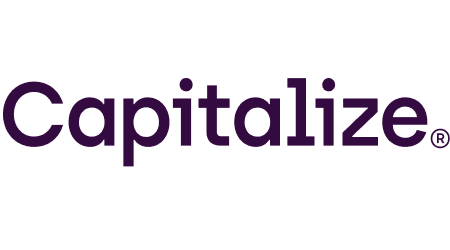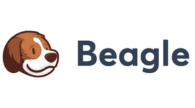-
Commitment to our readers
18 years
Helping you save money
Reviewed
by experts
Cited by
major publications
Finder maintains full editorial independence to ensure for our readers a fair assessment of the products, brands, and services we write about. That independence helps us maintain our reader's trust, which is what keeps you coming back to our site. We uphold a rigorous editorial process that ensures what we write and publish is fair, accurate, and trustworthy — and not influenced by how we make money.
We're committed to empowering our readers to make sound and often unfamiliar financial decisions.
We break down and digest information information about a topic, product, brand or service to help our readers find what they're looking for — whether that's saving money, getting better rewards or simply learning something new — and cover any questions you might not have even thought of yet. We do this by leading with empathy, leaning on plain and conversational language that speaks directly, without speaking down.
4 steps to roll over a 401(k) to an IRA
To roll over your 401(k) to an IRA, you must choose an IRA account type and provider and initiate the rollover process with your old 401(k) provider. Here’s what each step entails.
1. Choose a rollover IRA account type
When choosing an IRA type, note any potential tax implications. For instance, if you roll over your traditional 401(k) to a Roth IRA, you’ll have to pay income taxes the year you roll over the money. This is because a Roth IRA is a post-tax account in which you pay taxes on the money before you contribute versus when you begin taking withdrawals in retirement. The benefit is that when you withdraw the money in retirement, you won’t have to pay taxes on the qualified distributions
However, if you have a Roth 401(k) and roll your funds to a Roth IRA, you may not have to worry about paying any additional tax unless you have pre-tax employer contributions you’re rolling over.
Moving funds from a traditional 401(k) to a traditional IRA is not considered a taxable event if you complete the rollover within 60 days, according to IRS rules.
2. Compare and select an IRA provider
Not all IRA providers are designed alike — things like fees, investment options and other features and amenities differ from one bank or broker to the next. Whereas one broker may let you invest in a wide variety of assets, another may limit you to stocks and exchange-traded funds (ETFs).
Also, consider your investing approach as you compare providers. If you prefer to be hands-off, consider an IRA provider that offers automated investing using a robo-advisor.
3. Contact your old 401(k) provider and request a rollover
The actual transfer of 401(k) funds can take up to a couple of weeks, depending on the provider. Usually, you can select a direct rollover option, where funds are transferred from your old employer’s 401(k) provider to your new IRA provider. An indirect rollover is when you receive a check for your distribution and have to deposit the money with your IRA provider.
The advantage of a direct rollover is that it’s simpler and avoids potential tax implications. If you choose an indirect rollover and fail to deposit the money within 60 days, the money is subject to taxes and an early withdrawal penalty if you’re younger than 59.5 years old. Some 401(k) plan administrators automatically issue a check if your balance is below $1,000. This money incurs a 20% income tax withholding, and you’ll need to deposit the funds into an IRA within 60 days to avoid any early withdrawal penalties.
4. Deposit the money
If you choose a direct rollover option, your 401(k) plan administrator automatically deposits your money with your new IRA provider. If you choose an indirect rollover, deposit the money within 60 days to avoid taxes and penalties.
5. Invest your funds
Depositing or transferring funds into your IRA doesn’t mean these funds are invested. Unless you choose an IRA that offers managed portfolios, you’ll need to choose your own investments. If you’re unsure how to start investing, consider your time horizon, risk tolerance and investing goals when deciding which investments are right for you.
Our picks for 401(k) search and rollover services

- Free 401(k) search and rollover process
- Find your old 401(k) with Capitalize’s proprietary technology
- Guided rollovers to an IRA of your choice

- Find all your old 401(k)s and their hidden fees
- Borrow from your Beagle 401(k) or IRA with 0% net interest
- Robo-advisor available if you roll over your 401(k) to Beagle
Advantages and disadvantages of rolling over a 401(k) to an IRA
Rolling over a 401(k) to an IRA has different advantages and disadvantages.
Advantages
- More investment variety. IRAs account providers usually offer stocks, bonds, ETFs, mutual funds and more, while 401(k)s typically include mostly mutual funds.
- No employer restriction. Contribute to your IRA regardless of employment status.
- Education exception. The IRS lets you withdraw early from an IRA for qualified higher education expenses but does not allow the same for a 401(k).(1)
Disadvantages
- No loan options. Unlike 401(k)s, you cannot take a loan out with IRAs.(2)
- Limited creditor protection. While 401(k)s are protected from creditors as a result of the ERISA law, IRA laws and the level of protection differ state by state.
- Smaller contribution limits. Contribute up to $23,000 to your 401(k) in 2024 but only $7,000 to your IRA.
Is it a good idea to rollover 401(k) to IRA?
At the end of the day, transferring funds from your 401(k) to an IRA can be helpful if you wish to have more investment choices and potentially lower fees. If you find that your 401(k)’s creditor protections, loan options and investment choices align more with your goals, you may want to hold off.
It’s worth noting that your rollover does not affect your total IRA contribution amounts. For example, the IRA contribution limit is $7,000 and another $1,000 if you’re age 50 and older. If you roll over a $5,000 401(k) balance to your IRA, it won’t count toward your contribution limit.
Bottom line
A 401(k) rollover to an IRA is a straightforward process. But because of potential tax implications, it’s a good idea to roll your 401(k) over to an IRA of the same type. Review the best IRAs and best Roth IRAs to see which IRA provider is right for you.
Frequently asked questions
Can you roll a 401(k) into an IRA without penalty?
Yes, you can roll over a 401(k) into an IRA without penalties if you complete the rollover within 60 days.
Can you roll over a 401(k) to an IRA tax-free?
Yes, you can roll over a 401(k) to an IRA tax-free. If you transfer funds from a traditional 401(k) to a traditional IRA, you will not have to pay taxes again.
What is the easiest way to roll over a 401(k)?
The easiest way to roll over a 401(k) into an IRA is through a direct rollover, where your old 401(k) provider transfers your funds directly to your IRA.
How do I roll over my 401(k) from one company to another?
You need to check with your new 401(k) provider to see if they will accept your old 401(k). If they do, initiate the 401(k) rollover with your old provider.
Ask a question
More guides on Finder
-
Top IRA Match Accounts for 2025: Boost Your Retirement Today
Get up to a 3% IRA match with Robinhood and Acorns or a 1% IRA match with Public. See how to qualify here.
-
5 Best SEP IRA Providers of 2025
Explore the pros and cons of the best SEP IRAs and learn how to open one of these accounts.
-
7 Best Rollover IRA Accounts of 2025
Explore the advantages and shortcomings of the best rollover IRAs for beginners, mobile trading, advanced traders and more.
-
Best retirement plans of 2025
Review the best retirement plans in 2025, from employer-offered to individually opened to retirement plans for small business owners.
-
403(b) vs. Roth IRA: How do they compare?
Compare the key differences in contribution limits, tax advantages and investment options between 403(b)s and Roth IRAs.
-
7 types of IRAs: Which is right for you?
Learn about the different types of IRAs and which is right for you.
-
10 Best Roth IRAs: 2025’s Top Picks to Build Your Retirement Savings
Check out our picks of the best Roth IRA accounts for beginners, options traders, hands-off investors and more.
-
10 Best IRA Accounts for 2025: Top Retirement Picks
Check out our picks of the best IRA accounts for beginners, options traders, hands-off investors and more.
-
How to Start a Solo 401(K)
A retirement plan for self-employed individuals but may come with high administrative fees.
-
Goldco Review 2025: Pros and Cons
Pros and cons to consider before you sign up for a Goldco precious metals IRA.

